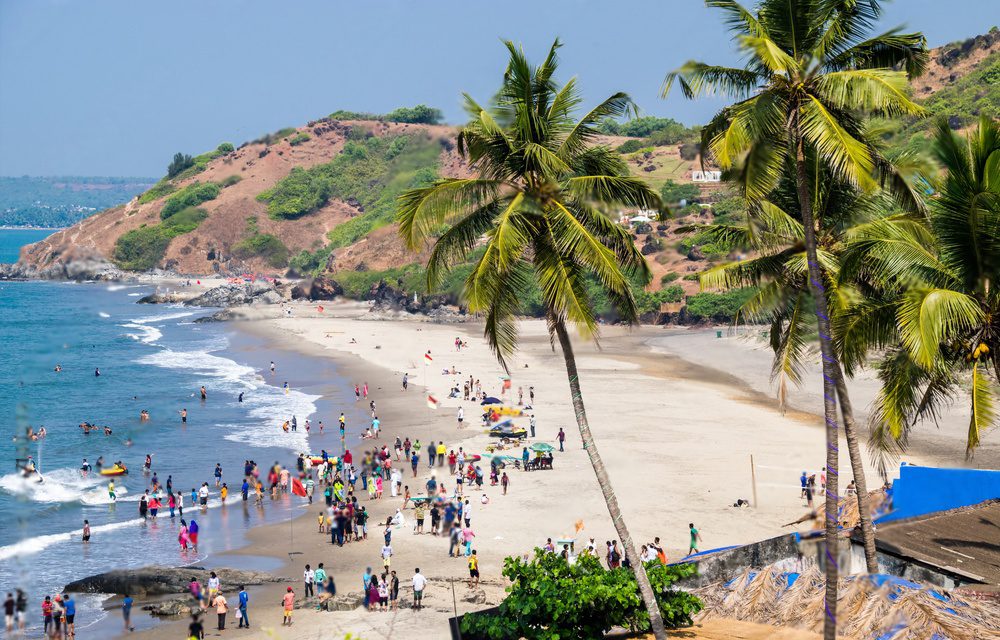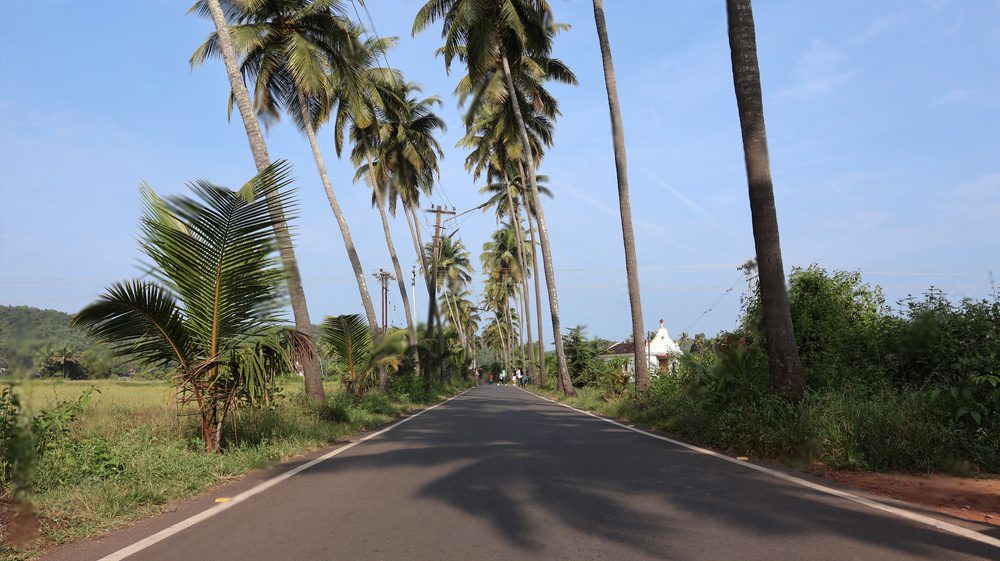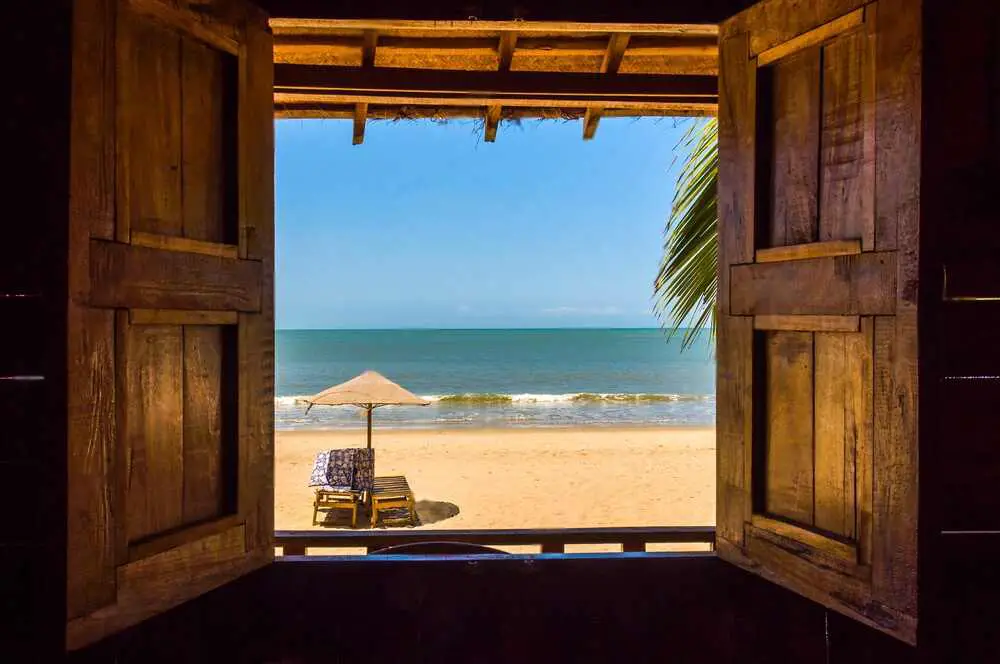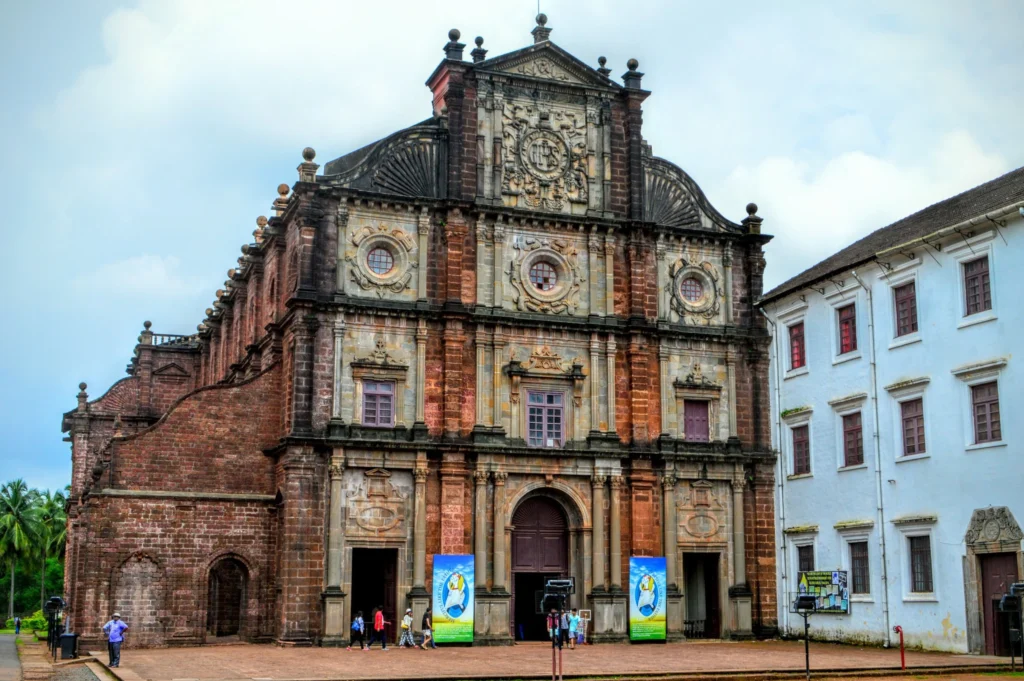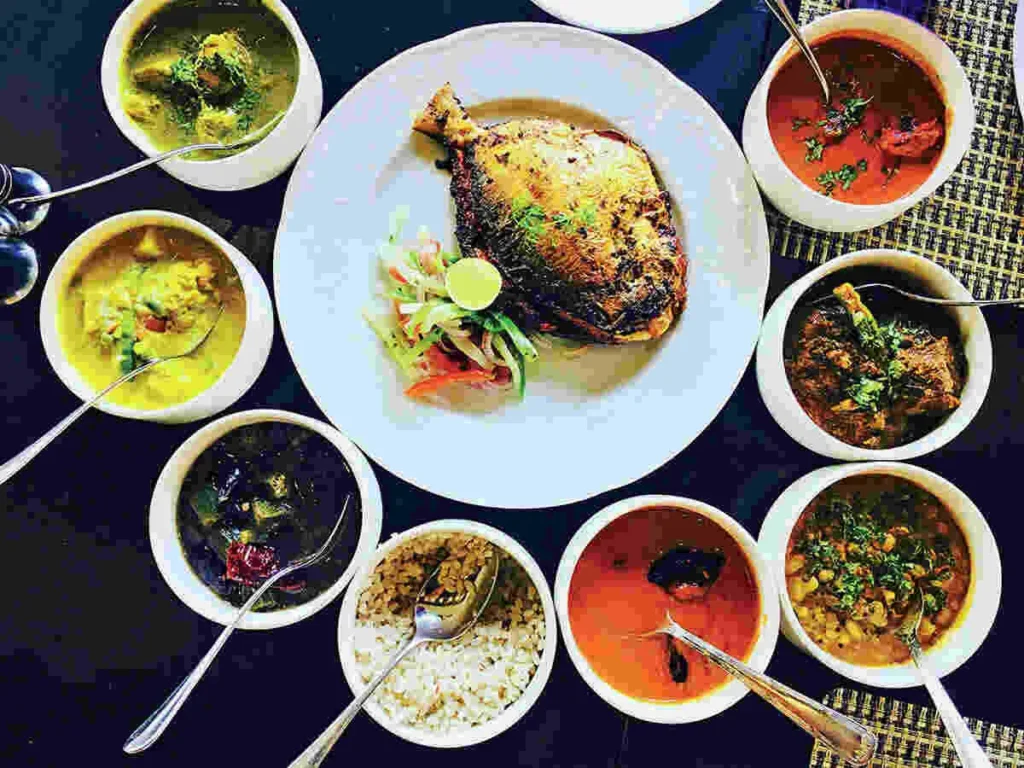Fatehpur Sikri, a majestic city bathed in the warm hues of red sandstone, rises from the plains of northern India near Agra. This architectural marvel, a UNESCO World Heritage Site, whispers tales of Mughal emperors and bygone eras.
Stepping within its walls is akin to traversing through time. Every stone here is etched with stories, every corner holds a fragment of history waiting to be unearthed. Once the grand capital of the Mughal Empire under Emperor Akbar, Fatehpur Sikri now stands as a silent testament to the flow of time.
How to reach:
Air: Agra Airport (Pandit Deen Dayal Upadhyay Airport) lies about 40 kilometers away. It offers domestic flights from major Indian cities like Delhi, Mumbai, and Jaipur. Taxis and public transport connect the airport to Fatehpur Sikri.
Train: Agra, boasting the Taj Mahal, boasts excellent rail connectivity. From Agra’s main stations (Agra Cantonment, Agra Fort, or Raja Ki Mandi), reach Fatehpur Sikri by road via buses or taxis. Alternatively, take a local train from Agra to Fatehpur Sikri Junction, the closest station to the site.
Road: Fatehpur Sikri enjoys good road links. National Highway 21 (NH21) allows easy access. Traveling from Agra (around 36 kilometers distant), expect a 1-1.5 hour journey by car or bus depending on traffic. Numerous private and state-run buses provide convenient transportation between Agra and Fatehpur Sikri.
Exploring the City: Upon arrival, explore Fatehpur Sikri and its surroundings using various local options. Cycle rickshaws, auto-rickshaws, and taxis are easily found near the entrance gate. Guided tours, offered on foot or by rickshaw, are a popular way to delve into the city’s rich history and architectural wonders.
Best time to visit:
Winter Wonderland (October – March): Embrace the crown jewel of seasons for exploring Fatehpur Sikri. With comfortable temperatures ranging from 5°C to 25°C, winter offers ideal conditions for sightseeing. Explore the sprawling complex without battling the scorching sun. Crisp air enhances the ambiance, making every historical site a delight to wander through. Clear skies present the architectural details and picturesque surroundings in perfect clarity.
Spring’s Gentle Touch (February – April): Witness the tourist season bloom alongside the vibrant spring flowers. As temperatures rise from 15°C to 35°C, spring offers pleasant weather for outdoor activities. Lush greenery adds another layer of beauty to Fatehpur Sikri’s landscape. Remember to carry sunscreen and stay hydrated, as the midday sun can be strong.
Monsoons Best Viewed from Afar (July – September): The monsoon season, while refreshing for nature, can be challenging for exploring Fatehpur Sikri. Heavy rainfall and high humidity can make navigating the historical complex slippery and muddy. Frequent downpours might disrupt travel plans and limit access to certain areas. Consider an alternative travel window for a smoother and more enjoyable experience.
Attractions:
Buland Darwaza (The Gate of Magnificence):
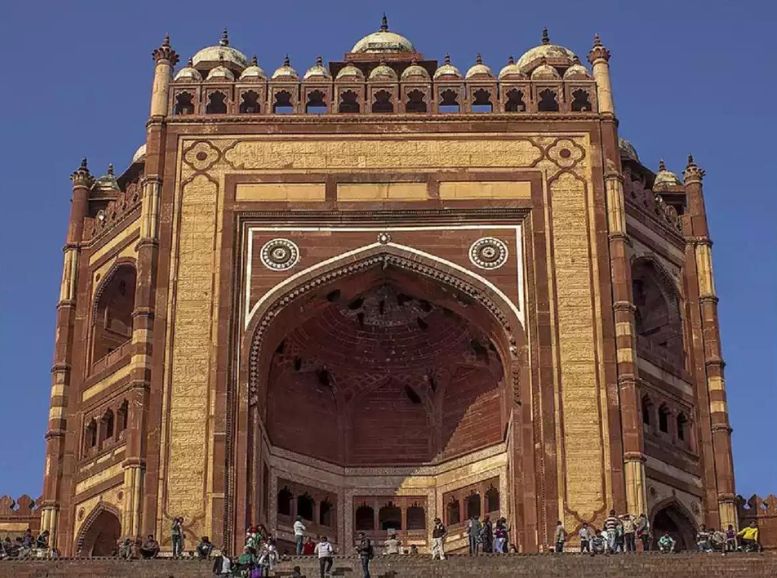

Dominating the entrance to Fatehpur Sikri, the Buland Darwaza (meaning ‘Gate of Victory’) embodies the grandeur of Mughal architecture. Emperor Akbar erected this colossal gateway in 1601 to celebrate his conquest of Gujarat. Intricate carvings and inscriptions embellish its surface. Soaring 54 meters high, the Buland Darwaza creates a sense of awe, serving as a symbolic reminder of the Mughal Empire’s power. As you ascend the 42 steps towards the gate, anticipation rises, hinting at the architectural wonders veiled within the city walls.
Jama Masjid: Fatehpur Sikri
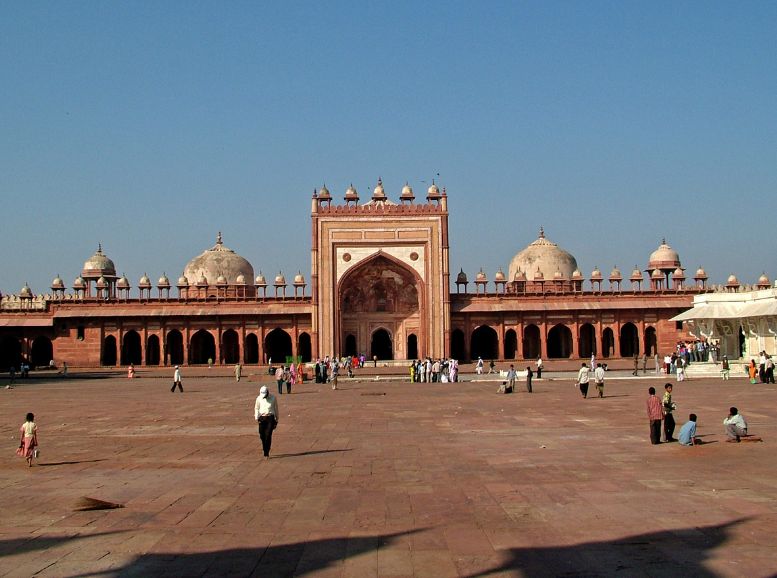

Juxtaposed with the Buland Darwaza, the Jama Masjid stands as a testament to the fusion of Indo-Islamic architecture. This grand mosque, one of India’s largest, boasts red sandstone adorned with marble accents. A spacious courtyard welcomes visitors, while intricately designed prayer halls beckon them further inside. Sunlight filters through captivating jali screens, weaving mesmerizing geometric patterns across the mosque’s interior. The Jama Masjid’s harmonious blend of architectural styles fosters a serene ambiance, making it a must-visit for history buffs, architecture lovers, and anyone seeking a moment of spiritual solace.
Tomb of Salim Chishti:
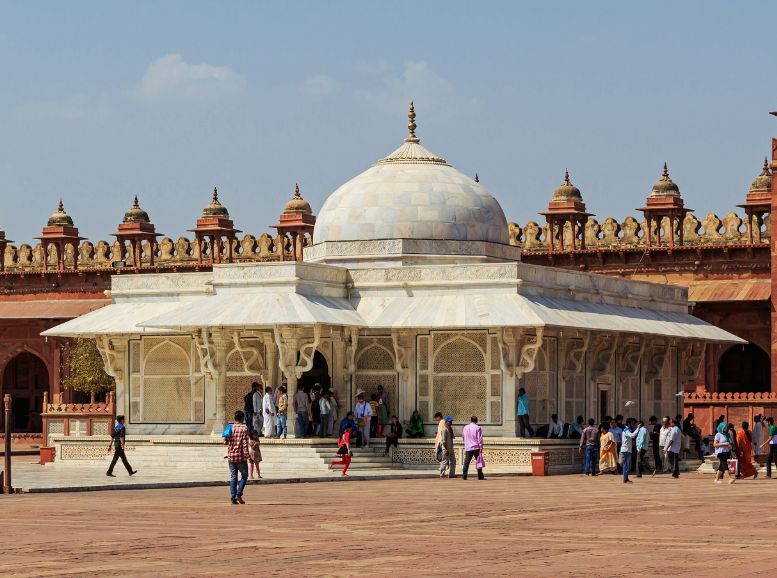

Within the Jama Masjid complex, a revered Sufi shrine awaits: the Tomb of Salim Chishti. Dedicated to the renowned saint Sheikh Salim Chishti, the tomb is a dazzling white marble marvel. Clad in intricate latticework screens (jaalis), the tomb exemplifies exquisite craftsmanship. Pilgrims and visitors of all faiths find themselves drawn to this sacred space, seeking blessings and paying their respects to the revered saint.
Diwan-i-Khas (Hall of Private Audience):
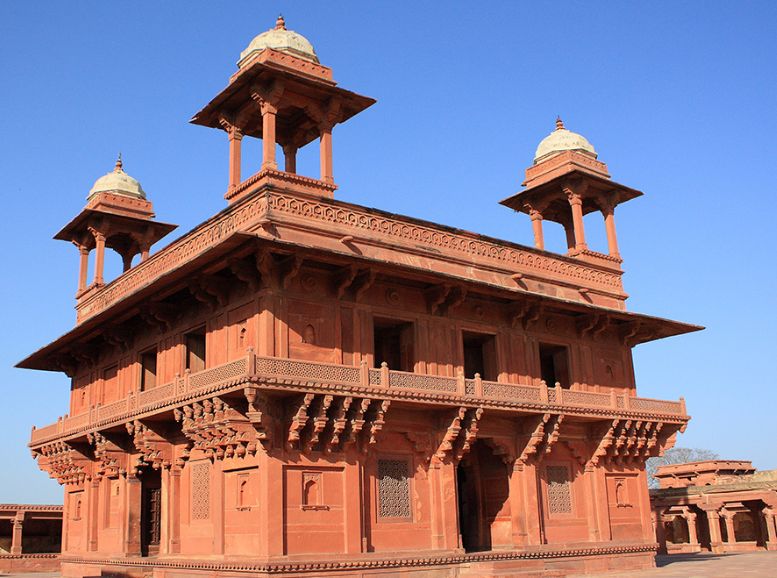

Reserved for exclusive audiences, the Diwan-i-Khas functioned as Emperor Akbar’s private meeting chamber. Within this grand hall, intricately carved columns frame a central platform designed to hold the emperor’s throne. The space exudes an aura of majesty and refinement. A crowning jewel of the Diwan-i-Khas is the ornate central pillar, known as the Hiran Minar (Elephant Tower). This remarkable structure stands as a testament to the era’s artistic prowess, adorned with exquisite carvings and captivating inscriptions.
Panch Mahal:
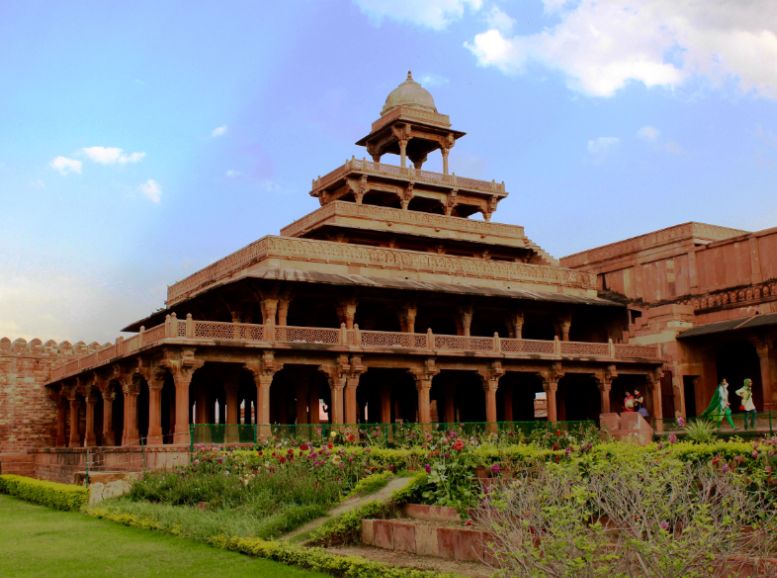

Juxtaposed with the Diwan-i-Khas, the Panch Mahal rises like a tiered wedding cake. This five-story pavilion, adorned with open arches and delicate pillars, is believed to have served as a royal entertainment center. Each level offers a progressively wider view of the surrounding landscape, culminating in a breathtaking panorama. Imagine the cool breeze carrying whispers of laughter as you ascend, soaking in the expansive vista – a testament to the Mughals’ ingenuity and love for aesthetics.
Jodha Bai Palace:
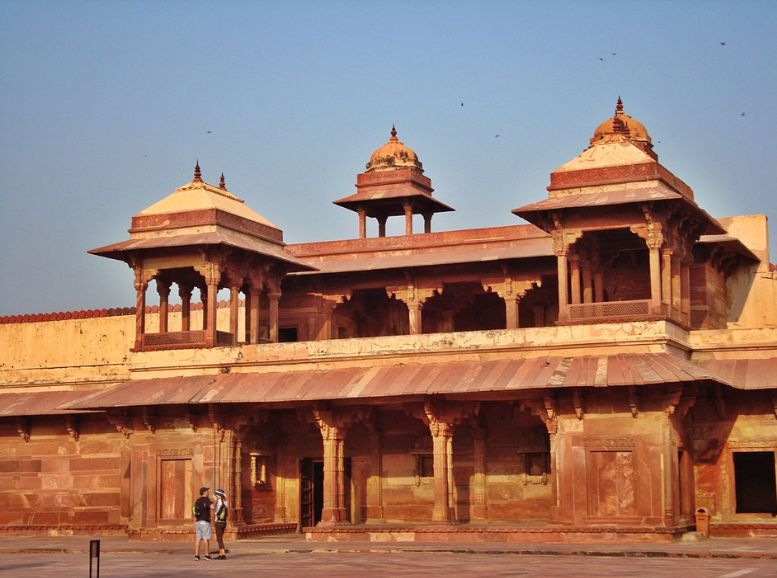

Jodha Bai Palace, a monument to love and cultural harmony, bears the name of Akbar’s Rajput wife. This architectural marvel exemplifies the fusion of Mughal and Rajput styles. Hindu and Islamic artistic traditions intertwine seamlessly, evident in intricate carvings, lattice windows, and airy courtyards. Explore the various chambers, from the queen’s private quarters to the royal baths, and gain a window into the lives and customs of the Mughal nobility.
Anup Talao:
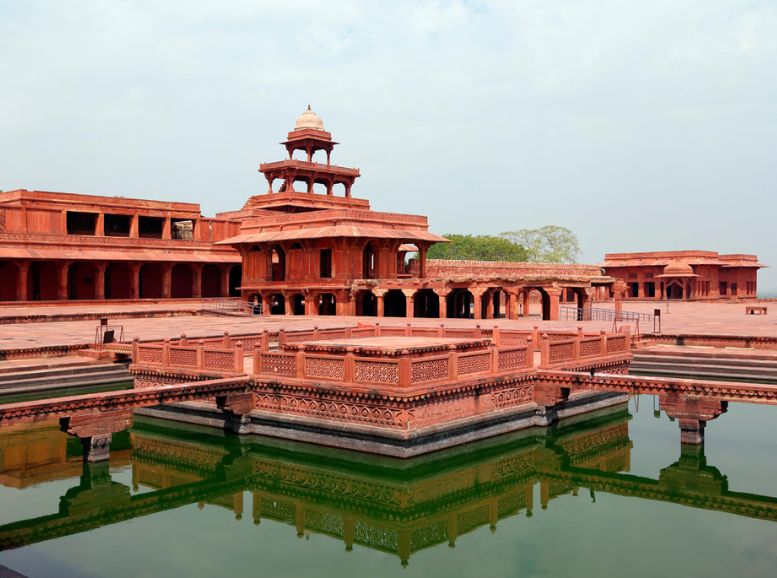

An oasis of serenity within Fatehpur Sikri, Anup Talao is a captivating square-shaped tank. Elegant pavilions and walkways border its calm waters. In the Mughal era, the central platform served as a stage for musical performances, entertaining the royal court. Today, visitors can soak in the tranquil ambiance and picturesque beauty of Anup Talao. It offers a perfect spot for relaxation and reflection amidst the grandeur of Fatehpur Sikri’s historical treasures.
Hiran Minar:
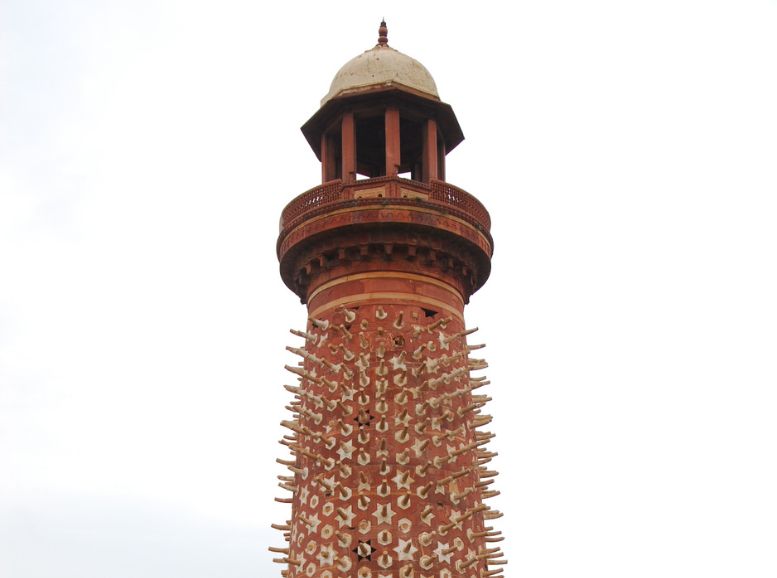

An enigmatic tower graces the outskirts of Fatehpur Sikri: the Hiran Minar. Clad in intricate stonework and inscriptions, it offers sweeping views of the surrounding landscape. Legend whispers of Emperor Jahangir building it as a tribute to his cherished deer. However, the tower’s unique design – a circular form adorned with exterior protrusions resembling elephant tusks – sparks debate among historians. Some posit it served a practical purpose, perhaps as a milepost or even a beacon for nighttime travelers. Climb the tower and lose yourself in the captivating panorama. As you gaze upon the sprawling landscape, ponder the intriguing mystery behind this enduring monument.
Birbal’s House:
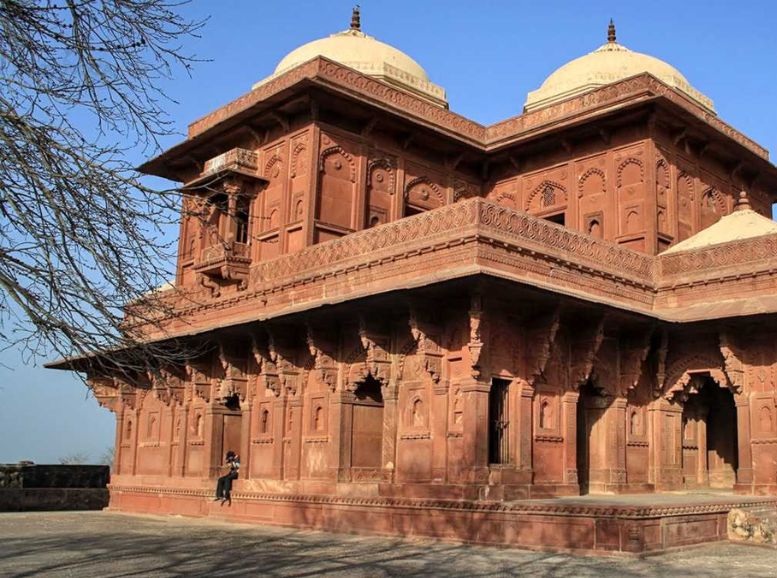

Standing near the Diwan-i-Khas, Birbal’s House sparks the imagination. Traditionally believed to be the residence of the witty courtier Birbal, this structure exemplifies Mughal architecture. Intricate carvings adorn its facade, while spacious courtyards and well-preserved interiors invite exploration. Immerse yourself in history as you wander the various rooms and chambers, pondering the life and legacy of one of Akbar’s most esteemed advisors.
Local experiences:
A Culinary Journey: Tantalize your taste buds with a flavorsome exploration. Savor the rich legacy of Mughlai cuisine – succulent kebabs, aromatic curries, and flavorful biryanis – offered at local eateries and street stalls. Don’t miss Agra’s famed Petha, a sweet treat made from ash gourd, for a truly immersive culinary adventure.
Unveiling the Past: Heritage Walks Step back in time with a guided heritage walk. Navigate charming streets, bustling bazaars, and historical monuments, each whispering tales of a bygone era. Knowledgeable guides illuminate the city’s past, its architectural wonders, and cultural significance, bringing history to life.
A Glimpse into Living Traditions: Artisan Workshops Witness the magic of age-old crafts firsthand. Visit local workshops and studios where skilled artisans meticulously create intricate marble carvings, exquisite inlay work, and vibrant handicrafts using time-honored techniques. Perhaps even try your hand at pottery or carpet weaving under expert guidance, taking home a piece of Fatehpur Sikri’s artistic legacy.
A Celebration of Culture: Performances Immerse yourself in the vibrant tapestry of Indian culture through captivating performances. Witness classical Indian dance forms like Kathak and Bharatanatyam come alive, accompanied by soul-stirring melodies. Engage with local artists to gain a deeper appreciation for the region’s rich artistic heritage.
A Rural Interlude: Village Visits Seek a simpler pace with a visit to nearby villages. Experience the warmth of rural hospitality as you interact with villagers, participate in agricultural activities, and learn about traditional farming practices. Discover the charm of village life amidst the serenity of the countryside.
A Desert Adventure: Camel Safari Embark on an unforgettable camel safari adventure. Traverse sand dunes, lush fields, and quaint villages aboard a majestic camel. Experience the thrill of riding the “Ship of the Desert” and create lasting memories amidst the tranquility of rural India.
A Nature Discovery: Bird Watching Explore the rich biodiversity surrounding Fatehpur Sikri. Embark on a bird watching excursion to nearby sanctuaries and wetlands. Spot a diverse array of avian species, from migratory wonders like Siberian cranes to pelicans and flamingos, that grace the region’s water bodies. Local birding enthusiasts can enhance your experience and unveil the ecological significance of the area.
A Lasting Impression Fatehpur Sikri beckons with a multitude of experiences that promise to linger in your memory. From indulging in culinary delights to exploring ancient crafts and forging connections with local communities, each experience offers a unique window into the heart of India.
Travel tips:
Planning is Key:
Before embarking on your adventure, craft a personalized itinerary. Research the best time to visit, considering factors like weather, crowds, and festivals to maximize your enjoyment.
Dress for Comfort and Respect:
Remember, Fatehpur Sikri is primarily an outdoor experience. Opt for comfortable, modest clothing, especially if visiting religious sites. Pack lightweight, breathable fabrics, comfortable walking shoes, and sun protection with a hat, sunglasses, and sunscreen.
Pack Smart:
Essentials like a refillable water bottle, snacks, and a camera (or smartphone for capturing memories) are a must. Consider a small backpack for easy carrying. A fully charged power bank or extra batteries are recommended, as charging stations might be limited.
Respect the Culture:
When visiting religious sites and monuments, acknowledge local customs and traditions. Remove footwear before entering mosques and shrines, cover your head if required, and maintain respectful silence in sacred spaces. Be mindful of noise levels and avoid littering to preserve the serenity of the surroundings.
Enrich Your Experience with a Guide:
Hiring a knowledgeable local guide can significantly enhance your understanding of Fatehpur Sikri. Gain valuable insights, discover hidden gems, and navigate the complex layout with ease. A guide can transform your visit into a truly enriching and informative experience.
Be Wary of Touts:
Remain cautious of touts and potential scams. These may involve unsolicited tour services, souvenir sales, or other ventures. Stick to authorized guides and vendors, negotiate prices clearly beforehand, and avoid impulsive purchases. Trust your instincts if a situation feels suspicious, especially in crowded areas.
Stay Hydrated and Energized:
Exploring Fatehpur Sikri can be physically demanding. Stay hydrated by constantly sipping water throughout your visit. Take rest breaks as needed, particularly during hot and humid weather. Plan your itinerary strategically, prioritizing the sights you find most interesting, to avoid exhaustion.
Respect Photography Guidelines:
While photography is generally allowed in most public areas of Fatehpur Sikri, some monuments and religious sites may have restrictions or require additional fees. Always respect signage and instructions regarding photography. If unsure about the rules, seek permission from the authorities.
Be a Responsible Traveler:
As a responsible tourist, strive to minimize your environmental impact and contribute positively to the local community. Dispose of waste responsibly, support local businesses and artisans whenever possible, and engage in cultural exchanges with respect and appreciation for local traditions.
Stay Informed and Safe:
Before and during your visit, stay informed about local regulations, safety guidelines, and any travel advisories. Keep your belongings secure, maintain situational awareness, and follow basic safety precautions to ensure a safe and enjoyable experience for yourself and others.
Conclusion
A testament to Mughal grandeur, Fatehpur Sikri offers a journey through time unlike any other. Explore the city’s intricate carvings, majestic gateways, and serene courtyards with Xplro.com. Savor Mughlai cuisine, embark on guided heritage walks, and immerse yourself in cultural experiences. From the towering Buland Darwaza to the Tomb of Salim Chishti, each moment celebrates India’s rich heritage. Leave with more than memories – gain a deeper understanding of Indian history, culture, and traditions. Whether you’re a history buff or a curious traveler, Xplro.com ensures Fatehpur Sikri becomes an unforgettable adventure. Visit Xplro.com today and craft your personalized journey!
FAQs
What makes Fatehpur Sikri famous?
- Fatehpur Sikri gained fame as the former capital of the Mughal Empire during Emperor Akbar’s reign. Its well-preserved architectural monuments, including the Buland Darwaza and Jama Masjid, highlight the grandeur of the Mughal era.
How far is Fatehpur Sikri from Agra?
- Fatehpur Sikri is situated approximately 36 kilometers west of Agra, making it easily accessible by road. The journey typically takes around 1 to 1.5 hours, depending on traffic conditions.
Is a visit to Fatehpur Sikri worthwhile?
- Absolutely. Fatehpur Sikri offers a captivating glimpse into India’s Mughal history, boasting splendid monuments and cultural heritage sites. Its architectural marvels and rich history make it a destination worth exploring.
What are the operating hours of Fatehpur Sikri?
- Fatehpur Sikri is open to visitors every day from sunrise to sunset. It’s advisable to plan your visit during daylight hours to fully appreciate the beauty of the monuments and explore the complex leisurely.
Are there entry fees for Fatehpur Sikri?
- Yes, there are entry fees for Fatehpur Sikri, varying for Indian and foreign tourists. Additionally, certain monuments or areas within the complex may have separate entry fees. It’s recommended to check the latest fees and regulations before planning your visit.
Can I hire a guide at Fatehpur Sikri?
- Yes, visitors have the option to hire local guides at Fatehpur Sikri to enrich their experience. These guides offer informative tours and insights into the history and significance of the monuments within the complex.
What dining options are available at Fatehpur Sikri?
- While dining options within the Fatehpur Sikri complex are limited, visitors can find restaurants and eateries in the nearby town of Fatehpur Sikri or Agra. It’s advisable to carry snacks and water for sustenance during your visit.
Is photography permitted at Fatehpur Sikri?
- Yes, photography is generally allowed at most public areas of Fatehpur Sikri. However, restrictions or additional fees may apply for photography inside certain monuments or religious sites. It’s best to follow signage and seek permission if uncertain.
Are restroom facilities available at Fatehpur Sikri?
- Yes, restroom facilities are available at various locations within the Fatehpur Sikri complex for visitors’ convenience. Utilizing these facilities during your visit ensures a comfortable experience.
Is Fatehpur Sikri accessible for differently-abled visitors?
- Efforts have been made to improve accessibility at Fatehpur Sikri, but some areas may pose challenges due to terrain. Accessible pathways and ramps are available in certain locations, and assistance can be sought from staff or guides as needed.
